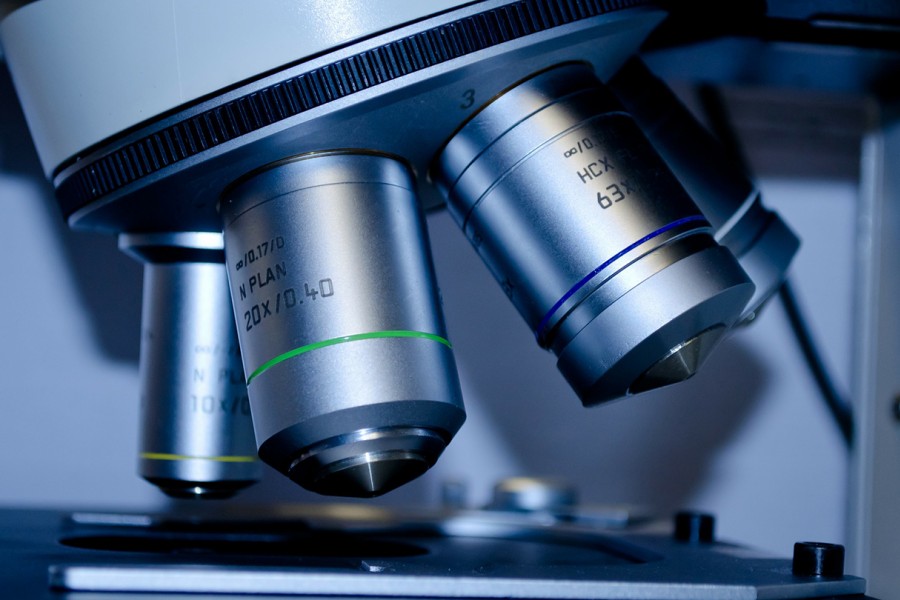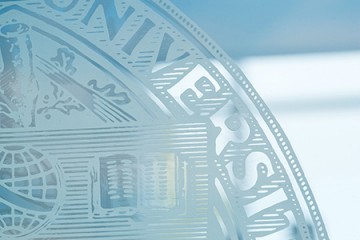Johns Hopkins University led all U.S. universities in research and development expenditures for the 38th consecutive year in fiscal year 2016, spending $2.431 billion on projects like fighting dengue, finding the functional age of cells, and explaining why the universe is making fewer stars.
The university's research spending in fiscal 2016, the most recent year for which data is available, was up 5.4 percent from fiscal 2015, according to the yearly National Science Foundation report on higher education R&D. That's nearly twice the percentage increase reported from 2014 to 2015.
"We have a long tradition of letting faculty explore new avenues of research with a very bottom-up approach, where faculty are given the means and infrastructure to be very entrepreneurial … and collaborative," said Denis Wirtz, the university's vice provost for research and a professor of chemical and biomolecular engineering, pathology, and oncology. "I think that culture translates into the very high success rate of our faculty in landing grants."
For fiscal year 2016, 902 universities were included in the NSF survey. Total R&D expenditure for the entire group increased 4.8 percent, from $68.567 billion in 2015 to $71.833 billion in 2016. The top 30 institutions accounted for 42 percent of the total.
The University of Michigan remained in second place with total R&D expenditure of $1.436 billion. The University of Pennsylvania jumped several spots to third place with $1.296 billion; followed by the University of California, San Francisco with $1.294 billion; and the University of Washington, Seattle, with $1.278 billion.
In fiscal year 2007, Johns Hopkins was the only university to report more than $1 billion in total R&D expenditure; the number of billion-dollar-plus research enterprises increased to 12 in 2016. Johns Hopkins first crossed the $2 billion threshold in fiscal 2010 and remains the only university to have done so.
In a separate ranking also released by the NSF and also covering fiscal 2016, Johns Hopkins was first yet again in spending on research funded by federal government agencies such as NSF and the National Institutes of Health. With $2.104 billion worth of research funded by federal agencies, Johns Hopkins became the first institution to breach the $2 billion barrier in that ranking.
Federally funded research by all U.S. universities increased 1.4 percent—adjusted for inflation—from 2015 to 2016, turning around a four-year decline.
"If you look at the portfolio of funding, it is truly remarkable to see the breadth of sources supporting our faculties' investigations," Wirtz said.
The university's federal funding sources include not only the NIH and NSF, but also the departments of Energy and Defense, the Centers for Disease Control and Prevention, NASA, and others.
Johns Hopkins researchers' success in winning federal funding—which accounted for close to 87 percent of its 2016 R&D expenditure—enables them to pursue projects in fields as diverse as cancer immunotherapy, space exploration and astrophysics, public health, and psychology.
Over the past year, for instance, scientists at the university have reported sequencing the genome of the species of wheat used in bread and creating a lithium-ion battery that can supply electricity despite being battered, bruised, and doused in water. Johns Hopkins researchers also repurposed a blood pressure drug to heal wounds, found that legalization of same-sex marriage was associated with declines in suicide attempts among high school students, built nano-scale bridges with DNA, and developed a bendy alloy that could withstand high temperatures for use as sensors.
Along with federal funding, universities receive institutional backing and funding from state and local government, nonprofits, and businesses. Research at Johns Hopkins is also funded by income from licenses of past and present business enterprises. The university earned $58 million in licensing revenue in 2016—a standout year—followed by $17.1 million in 2017. Through both 2016 and 2017, the university attained a consistent 8 percent more patents than the previous year. The university helped launch 22 companies in 2016 and 18 more in 2017.
All of these efforts have diversified the university's funding portfolio. Wirtz believes, however, that there is more the university can do.
"Last summer, I assembled a diverse team of experts to provide enhanced services to interdisciplinary groups of faculty," said Wirtz of his new Research Development Team. The RDT was launched to help faculty apply to large collaborative external funding opportunities.
Since 1979, the NSF's inclusion of Applied Physics Laboratory spending in its accounting of Johns Hopkins expenditures has solidified the university's annual position at the top of the NSF rankings. In fiscal year 2016, APL spent $1.403 billion on research and development, of which $1.36 billion was federally funded.
There is now greater collaboration between engineers at APL and scientists elsewhere in the university, partly due to the Bloomberg Distinguished Professorship program, Wirtz said.
The full set of data tables from the NSF survey is available online.
Posted in University News
Tagged research funding









